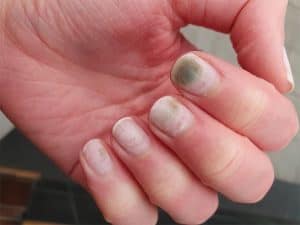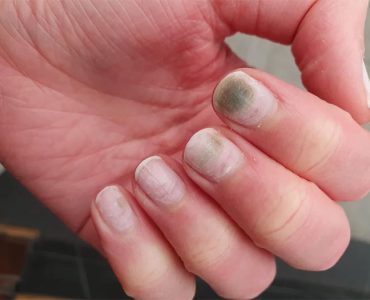Nail fungus, also known as onychomycosis, is a common condition that affects millions of people worldwide. While it may not be a life-threatening ailment, it can cause discomfort, embarrassment, and even lead to more severe complications if left untreated.
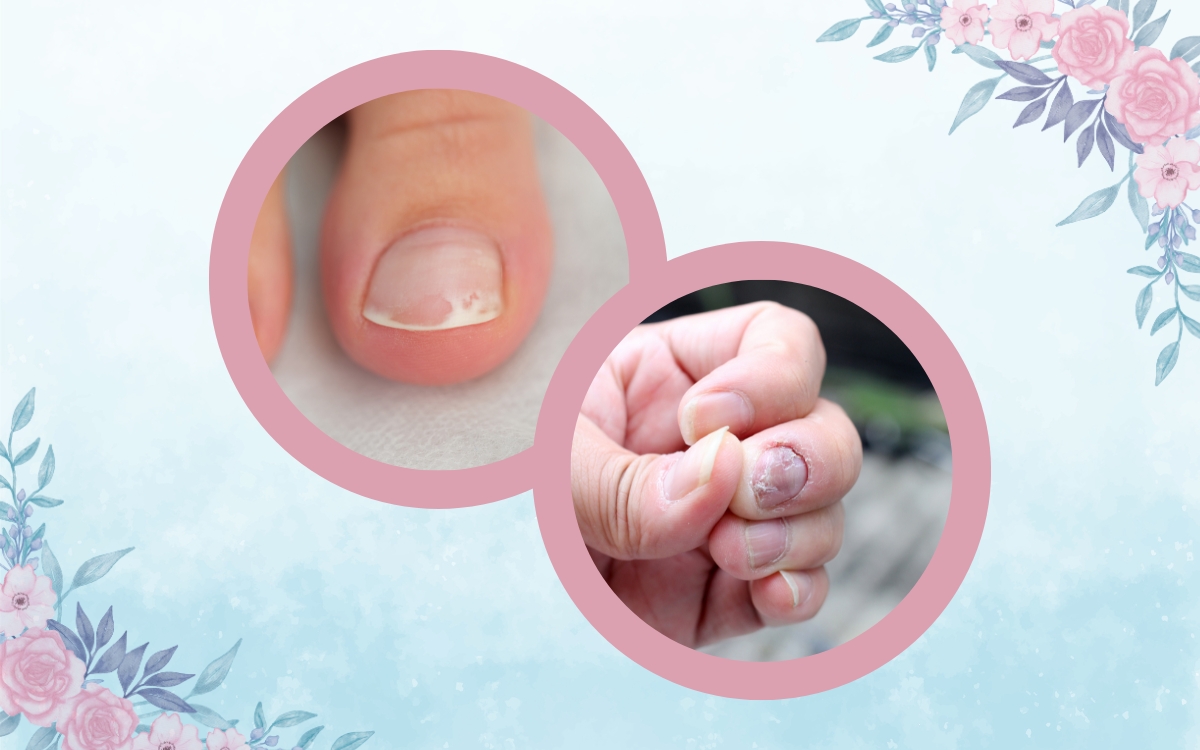
The good news is that recognizing the signs of nail fungus early on can help you take timely action and seek appropriate treatment. In this article, we will delve into the various symptoms and indicators of nail fungus, enabling you to identify the problem and take the necessary steps towards recovery.
Importance of Early Detection and Treatment
Timely detection and treatment of nail fungus play a crucial role in effectively managing the condition and preventing its progression. Nail fungus, if left untreated, can lead to discomfort, pain, and potential complications that may affect not only the nails but also overall foot health. Understanding the significance of early detection and treatment can empower individuals to take prompt action and seek appropriate medical intervention. Let’s delve into the reasons why early detection and treatment are so important.
Preventing Further Nail Damage and Complications
When nail fungus is left untreated, it can cause progressive damage to the nails, leading to thickening, brittleness, and even nail deformities. The longer the infection persists, the more difficult it becomes to restore the nails to their healthy state. In severe cases, the nail may become detached from the nail bed, resulting in pain and increasing the risk of secondary bacterial infections.
Controlling the Spread of Infection
Nail fungus is highly contagious and can easily spread from one nail to another or to other individuals. The fungi responsible for nail infections thrive in warm, moist environments, such as public swimming pools, communal showers, and gyms. Early detection allows individuals to take necessary precautions to prevent the spread of infection. Prompt treatment helps contain the fungus and reduces the risk of transmission to others.
Preserving Nail Health and Appearance
Nail fungus can significantly impact the appearance of the nails, causing discoloration, thickening, and crumbling. The aesthetic changes can be distressing and affect self-confidence. Early detection and treatment can help minimize the damage to the nails and prevent the infection from spreading to adjacent healthy nails.
Enhancing Comfort and Quality of Life
Nail fungus can cause discomfort, itching, and pain, especially when the infection progresses. The infected nails may become sensitive to pressure, making activities such as walking or wearing shoes uncomfortable. Early intervention and treatment alleviate these symptoms and restore comfort.
Avoiding Unnecessary Expenses and Treatment Burden
Delaying the detection and treatment of nail fungus may lead to the need for more intensive and costly treatments in the future. Severe cases of nail fungus often require prolonged treatment regimens, extensive medical intervention, or even surgical options.
Read This Next:
How Does Nail Fungus Develop?
Understanding how nail fungus develops is crucial for recognizing the risk factors and taking preventive measures. Nail fungus, also known as onychomycosis, is caused by various types of fungi that thrive in warm, moist environments.
These fungi belong to a group called dermatophytes, but other types of fungi, such as yeasts and molds, can also contribute to nail infections. Let’s explore the development of nail fungus and the factors that contribute to its occurrence.
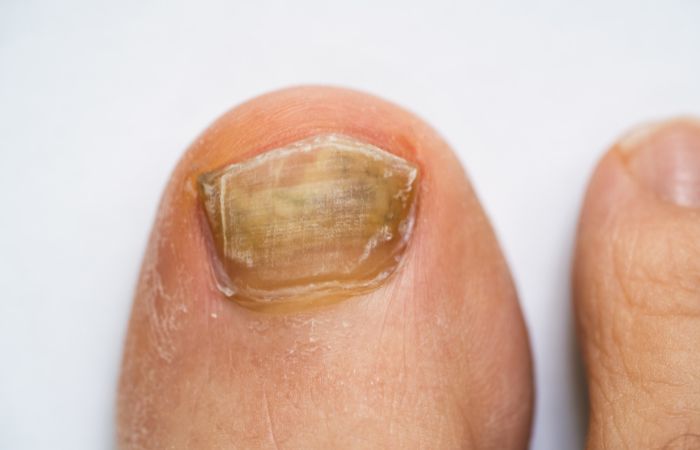
Fungal Invasion of the Nail
Nail fungus typically begins with the invasion of fungi through small cracks or cuts in the skin around the nail or through the opening between the nail and nail bed. Fungi thrive in environments that are warm, damp, and lack proper ventilation.
Walking barefoot in public areas like swimming pools, locker rooms, and communal showers increases the chances of coming into contact with the fungi responsible for nail infections. Once the fungi gain entry, they begin to colonize and spread, leading to the development of nail fungus.
Risk Factors for Nail Fungus Development
Several factors increase the likelihood of developing nail fungus. Understanding these risk factors can help individuals take preventive measures and reduce their susceptibility to infection.
Poor Nail Hygiene
Inadequate nail hygiene, such as failure to keep the nails clean, trimmed, and properly dried, can create an environment conducive to fungal growth. Moisture trapped under the nails or in between the toes provides an ideal breeding ground for fungi.
Damaged Nails or Skin
Nails that are already damaged, weakened, or have underlying conditions like psoriasis or eczema are more susceptible to fungal invasion. Additionally, cuts, abrasions, or injuries to the skin around the nails create entry points for fungi, increasing the risk of infection.
Weakened Immune System
A weakened immune system compromises the body’s ability to fight off infections effectively, including fungal infections. Conditions such as diabetes, HIV/AIDS, or autoimmune disorders can diminish immune function and make individuals more vulnerable to nail fungus.
Read This Next:
Age and Genetics
Advancing age can contribute to a higher risk of nail fungus due to reduced blood circulation and slower nail growth, which can provide an opportunity for fungi to colonize. Additionally, genetics can play a role in predisposing certain individuals to nail fungus.
Communal Areas and Poor Footwear
Walking barefoot in public areas, especially in warm and moist environments like swimming pools or gyms, increases the exposure to fungi. Wearing tight, non-breathable shoes and socks can create an environment that promotes fungal growth and infection.
Nail Salons and Contaminated Instruments
Inadequate sterilization practices at nail salons can lead to the transmission of fungal infections. Sharing contaminated nail instruments or using improperly sanitized equipment can introduce fungi to healthy nails.
Recognizing the Signs of Nail Fungus
Early detection of nail fungus is crucial for timely intervention and effective treatment. By being aware of the signs and symptoms, individuals can identify the presence of nail fungus and seek appropriate medical attention. Let’s explore the various indicators that can help in recognizing nail fungus.
Changes in Nail Appearance
One of the primary signs of nail fungus is a change in the appearance of the nails. Paying attention to the following visual cues can help in early detection:
Discoloration
Nail discoloration is a common and noticeable symptom of nail fungus. Infected nails may appear yellow, brown, white, or have patches of discoloration. The color change may start at the tip or edges of the nail and gradually spread towards the nail bed. Discoloration is often one of the earliest signs of nail fungus and should not be ignored.
Thickening of Nails
Fungal infection can cause the nails to thicken and become abnormally bulky. Affected nails may appear noticeably thicker than healthy nails. As the infection progresses, the nail may become more difficult to trim and maintain. Thickening of the nails can lead to discomfort and make it harder to wear certain types of shoes.
Brittle or Crumbly Nails
Infected nails often become brittle and prone to breaking or crumbling. They may develop a powdery or friable texture, making them more susceptible to damage. Nails may also lose their natural shine and appear dull. Brittle or crumbly nails are a result of the fungal infection affecting the structure and integrity of the nail.
Texture and Shape Changes
Apart from changes in appearance, nail fungus can also lead to alterations in nail texture and shape. Paying attention to these indicators can aid in the early recognition of nail fungus:
Read This Next:
Nail Shape Alteration
Fungal infection can cause the nails to become distorted or change shape. Nails may become curved, warped, or develop an irregular shape. This abnormal nail growth can be a significant visual indicator of nail fungus. The affected nails may appear uneven and may require extra care while trimming.
Texture Changes
Infected nails may exhibit changes in texture. They may appear rough, uneven, or develop tiny pits on the surface. The affected area of the nail may feel rough or grainy to the touch. Texture changes can vary depending on the severity of the infection, with more advanced cases often showing more pronounced texture abnormalities.
Separation of the Nail from the Nail Bed (Onycholysis)
Onycholysis refers to the separation of the nail from the nail bed. It is a common symptom of nail fungus. As the infection progresses, the nail may lift or detach partially or completely from the nail bed. This can result in pain, discomfort, and an increased risk of secondary bacterial infections. Onycholysis may start at the tip of the nail and gradually extend towards the cuticle.
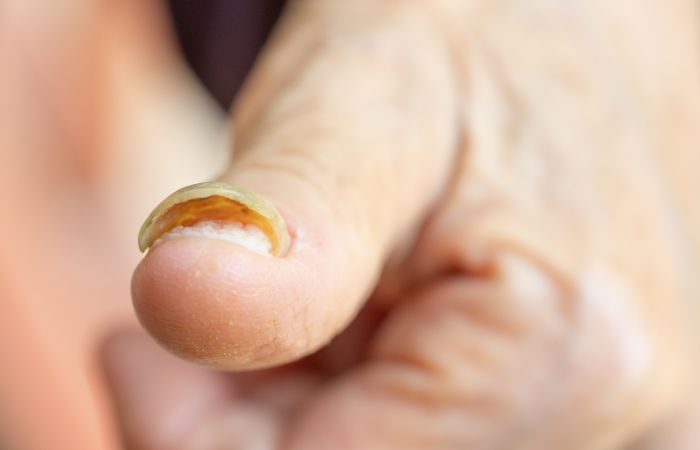
Other Symptoms and Indicators
In addition to visual changes, nail fungus can present with various other symptoms and indicators. Paying attention to these signs can aid in the early detection of nail fungus:
Itching and Discomfort
Fungal infections can cause persistent itching or discomfort around the infected nails. Individuals may experience a constant urge to scratch or a sensation of discomfort or irritation. Itching is often more pronounced when the feet are enclosed in shoes or when the nails are in contact with socks or footwear.
Foul Odor
In advanced cases of nail fungus, infected nails may emit a foul odor. The odor is often described as unpleasant and may be noticeable even after washing or cleaning the affected area. The odor is caused by the metabolic byproducts of the fungi present in the nail and the breakdown of the nail tissue.
Skin Irritation
The skin surrounding the infected nail may show signs of redness, inflammation, or peeling. This can be an indication of the fungal infection spreading to the surrounding skin, causing irritation and inflammation. The affected skin may feel tender and may exhibit a raised or swollen appearance.
Conclusion
Spotting the signs of nail fungus is crucial for early detection and effective treatment. By paying attention to the symptoms such as discoloration, thickening, crumbling, and odor, you can identify the presence of nail fungus and seek appropriate medical intervention. Remember, early treatment not only helps in managing the condition more effectively but also prevents the spread of the infection to other nails or individuals.



